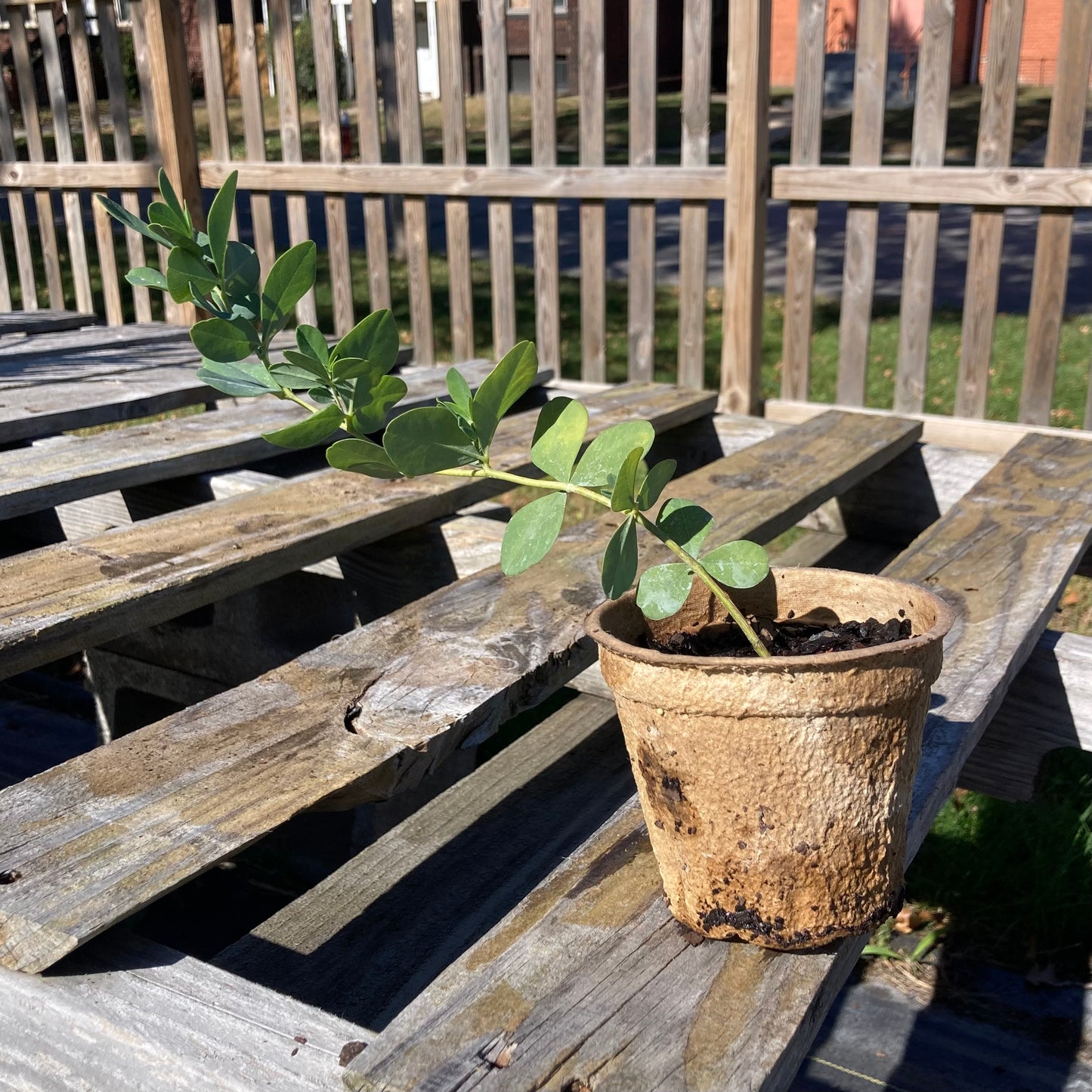White wild indigo
Baptisia alba
Baptisia alba
Couldn't load pickup availability
Sun/shade: Full sun to part shade
Soil moisture: Dry to medium
Height: 4'
Flowering period: June
Deer resistance: Medium
White wild indigo jump-starts the summertime garden with tall spikes of creamy white blooms in the month of June. The plant’s full, rounded shape is supported by bare lower stems, creating a unique and attractive form. Shorter plants tend to fill in next to it, overtopped by its slightly spreading canopy. After flowering, white wild indigo develops large seedpods which turn black late in the season, adding interest.
Primarily a prairie species, white wild indigo is an uncommon constituent of NE Ohio meadows and other open habitats. Though it tolerates partial shade, in the garden environment it performs better and blooms more abundantly in full sun. It is well suited for average to moderately dry soil, and it has good drought tolerance. The plant is slow to establish and may take several years to achieve its full floral display. It is not an aggressive spreader but over time will increase the size of its base through sending up additional stems. Along with Ohio spiderwort, butterfly milkweed, and narrow-leaved sundrops, white wild indigo adds much-valued color to the early summer garden.
Generally avoided by deer, white wild indigo should be little impacted by browsing once it has filled in. During its early stages of growth, though, it is more vulnerable, and if browsing is observed at this time, temporary caging may be useful.
White wild indigo requires little maintenance. It develops a deep, sturdy root system which makes division and transplanting not advisable. The plant’s stout form makes it resistant to blowdown and leaning once mature. If, after flowering, the plant’s stems sprawl outward to some extent, the situation can be easily remedied with some trimming.
This plant is an outstanding pollen and nectar source to bumble bees. Smaller bees find it difficult to separate the petals and access floral rewards, which makes the payoff even more bountiful for the bumbles. White wild indigo is also a host plant for the orange sulfur butterfly, a common species of uncommon beauty, with warm, orange-yellow wings edged in black.
Photo © Eric Hunt, CC BY-SA 4.0.



